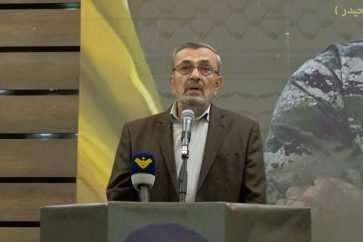A year after the Israeli war on Lebanon ended, northern Zionist settlers say they are living with the consequences of a conflict that has left their communities fractured and their region struggling to recover. Guy Varon, a Zionist writer for Channel 12’s website, reports that the longest war in “Israel’s” history has created wounds that will shape the north for years to come—most notably the collapse of entire communities evacuated for more than 18 months and an economy that was nearly paralyzed and remains far from recovery.
Varon writes that displaced settlers speak bitterly of broken promises and of the reasons that keep them from returning to a place once simply called “home.”
According to official figures, 85% of evacuated settlers have gone back. But a closer look, Varon notes, reveals stark disparities: some settlements—such as Bassa, HaGoshrim, and Shlomi—are seeing population growth, while others, including Metula, Shtula, and Ma’ayan Baruch, are experiencing population decline and return rates well below the national average.
Varon stresses that the headline figure does not reflect the reality on the ground: it excludes new arrivals who moved to the region after the war, as well as long-time residents who left during the conflict and have no intention of coming back.

The government, he writes, repeatedly announced grand reconstruction plans meant to stem the exodus from the north. Yet the promised funds have steadily shrunk. Of the roughly US$3.7 billion pledged, the government has approved just US$1.5 billion, and only US$1.3 billion has actually been spent. Varon notes that implementation will take years and that the results remain invisible on the ground.
Data from the Eastern Galilee Cluster and Tel Hai College, he adds, paint an even bleaker picture of business activity. Some 85% of businesses in the Galilee reported income losses over the past year compared with pre-war levels, and 45% say they are considering shutting down this year. A large majority report receiving no government support for months. Meanwhile, thousands of businesses are still stuck in lengthy tax-authority procedures, waiting for compensation promised more than two years ago.
Varon also highlights the testimony of Arieh Ackerman, a longtime Zionist resident of the Israeli settlement Kiryat Shmona who left with his family after two decades in the Upper Galilee. Ackerman described the mounting hardships—beyond the war itself—that pushed them to leave.
“There is no culture here, nothing to do, and opportunities are scarce. After two very difficult years, my children and I are in therapy. Many homes collapsed after divorces. The government doesn’t understand what’s happening on the ground, and those at the top don’t grasp that there is no real reconstruction here at all,” Ackerman added.
The continuing crisis in northern occupied Palestine cannot be separated from the shifting realities created by the 2023–2024 war, a confrontation that exposed deep structural weaknesses in the Israeli enemy’s northern front. Hezbollah’s sustained pressure along the border—military, political, and psychological—reshaped the balance of power and forced a long-term evacuation unprecedented.
Source: Al-Ahed News Website (Edited and translated by Al-Manar English Website)




